New Pool Owner
Let’s dive right in …
Where to Start?
Steps
01 | Identify the type of pool filter you have – sand, cartridge, diatomaceous earth.
02 | Check that the pump and weir baskets are intact.
03 | Know the size of your pool.
04 | Know the type of pool lining.
05 | Understand how the pump timer works – refer to the operating manual.
06 | Understand the different multiport valve settings.
07 | Check that the pool water is topped up.
08 | Have a pool water test kit available.
TOP TIP
If you use borehole water, add 1 bottle of HTH® Metal Remover.
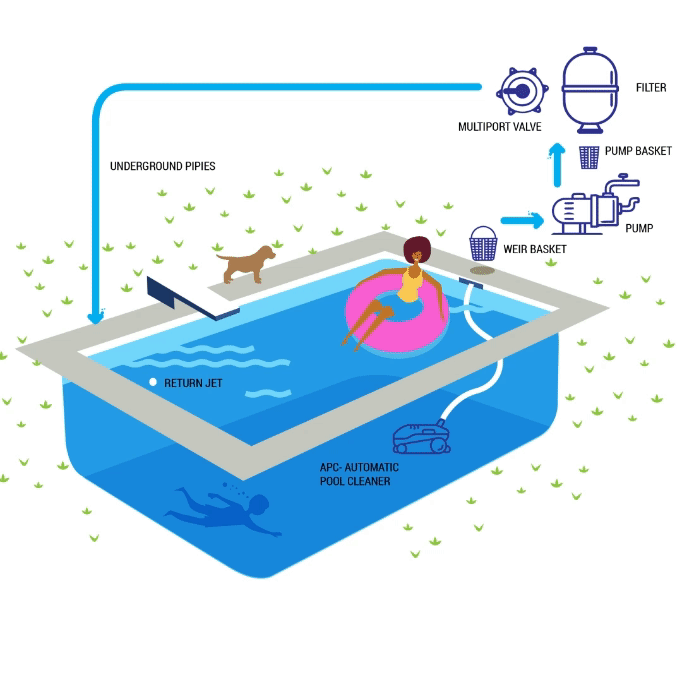
Pool Linings
There Are Four Types Of Pool Linings
Here is a simple way to determine what type of pool lining you have:

Fibreglass
A fibreglass lining can be applied to previously
gunite or marbelite pools, or exists in premoulded
factory build pools. The lining is less porous than
on a marbelite and is smooth to the touch.
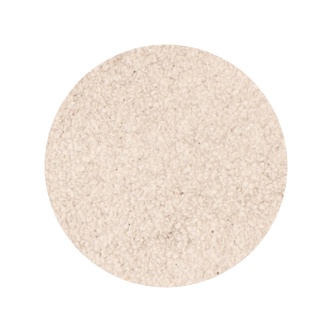
Marbelite
A marbelite pool has a gunite or marbelite lining on
top of its concrete shell. The lining is porous and
rough to the touch.
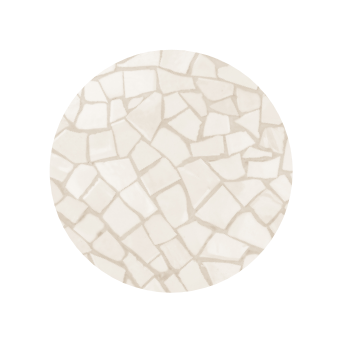
Chip Tile
Chip tile pool linings are similar to marbelite pools
in nature but are decorated with tiles.

Vinyl
Vinyl pool linings are made of plastic.
Pool Pump & Filter
Correct Filtering Hours
In general, we recommend that you filter for:
Summer
12hrs per day
12hrs per day
Winter
6-8hrs per day
6-8hrs per day
Adjust your summer filtering hours to suit your pool size. In winter, you can reduce the filtering hours by half.
TOP TIP
How to find out what pump size you have?
Just take a look at the actual pump you have. It will indicate the kW of the actual pump. Then based on the volume of water your pool holds, use the table below to find out the correct number of hours you should filter for per day.
Filtering times measured in Hours
Select your pool Size
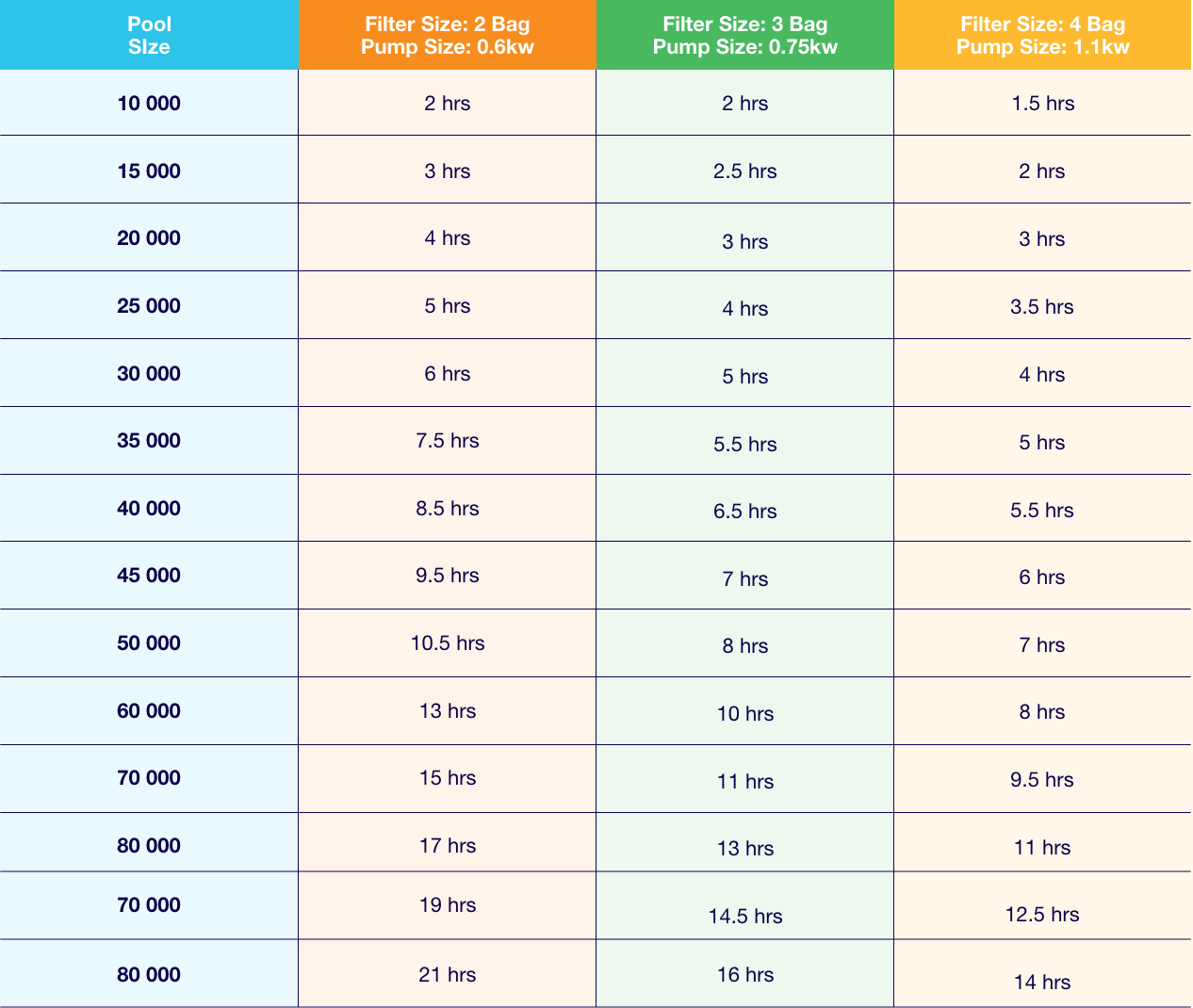
Calculation example:
Average pool size = 50,000L, 0,75kW pump and 3 bag filter
Filtering hours in summer = 8 hours, in winter = 4 hours
Filtering hours in summer = 8 hours, in winter = 4 hours
How Does The Pool Pump And Filter Work?
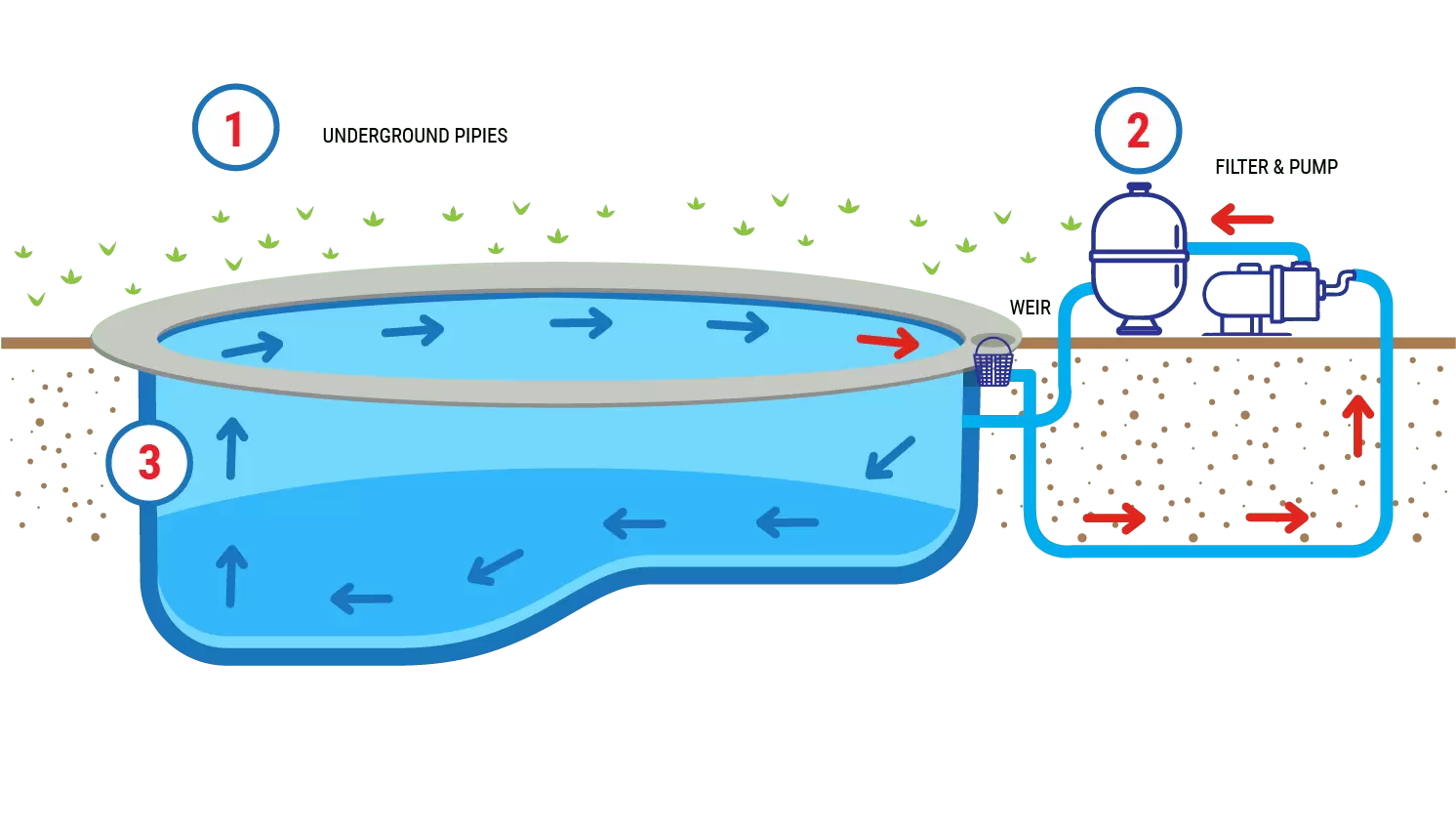
The pool pump pulls water from the pool and pushes it through
the filter where debris is trapped, and then returns the clean
water back into the pool.
TOP TIP
For effective filtration, remember …
To clear pump & weir baskets and backwash and rinse your filter.
Selecting the correct setting for your filter
There are 6 settings on the Multiport Valve
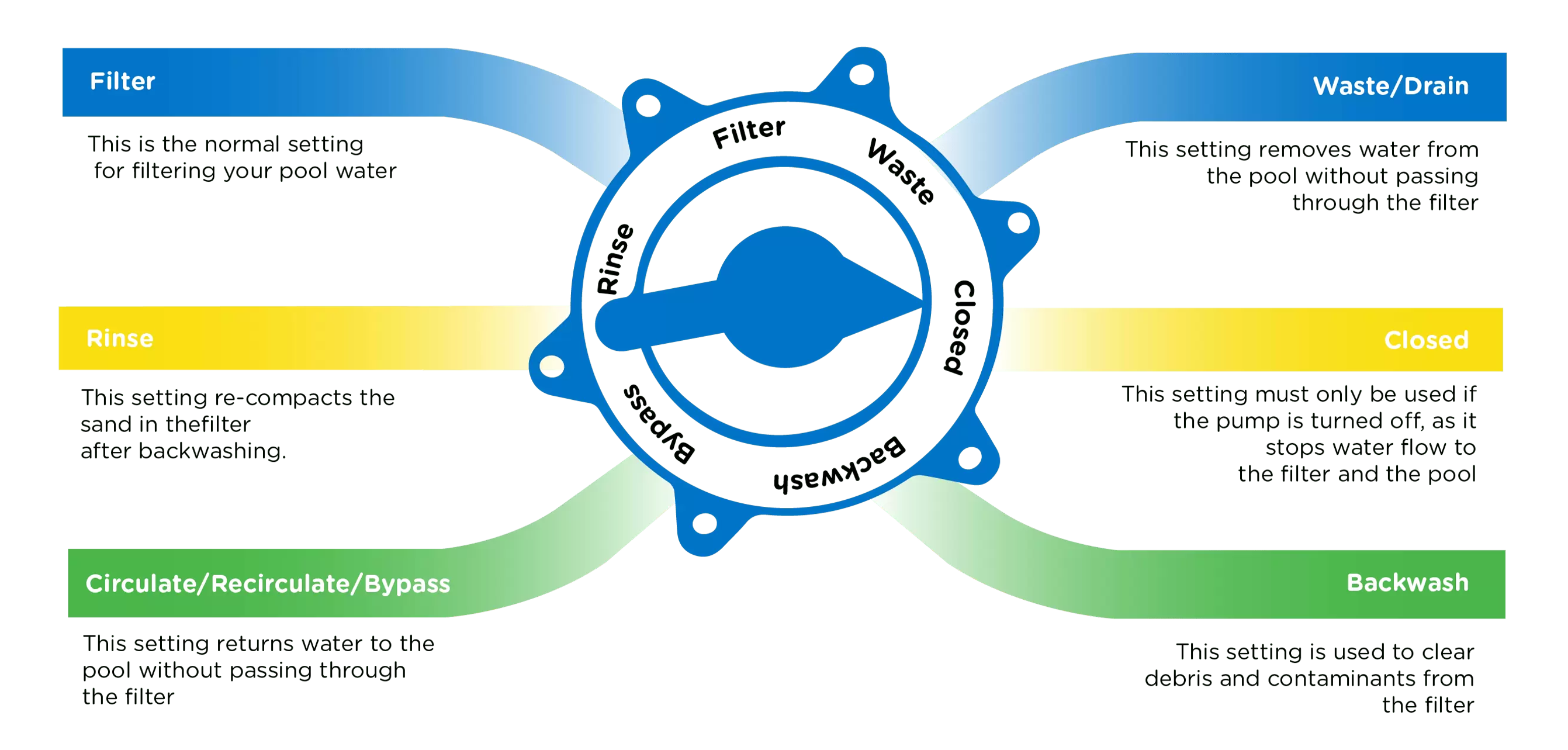
TOP TIP
Selecting functions
Remember to switch off the pump before moving between functions of the multiport valve. Always turn the lever in a clockwise direction.
Filling your New Pool
It is important to know what type of lining you have and to follow the pool builders’ instructions when filling your pool.
Let’s fill it up
Place the garden hose in the deep end of the pool, making sure to tie a cloth over the end of the hose to diffuse the water pressure. Switch the hose on and fill the pool until the water level reaches the middle of the entrance to the weir. The colour of the pool water will be greenish – this is normal.
01 | pH
Do a pH Test and correct the pH level to 7.2 — 7.6.
02 | Total Alkalinity
Do a TA test and correct the TA to 80 -120ppm.
03 | Chlorine
In the early evening, add 2 cups of HTH® Granular for every 10 000 liters of pool water. In the case of vinyl and fiberglass linings, add HTH® Granular via the weir. Do not allow any swimming at this stage.
04 | Filter
Filter continuously for 24 hours. After 12 hours test and correct if necessary. Continue filtering until
the 24 hour cycle is completed.
05 | Lining
Unless you have a marbelite lining, you may now connect the automatic pool cleaner. If you have
a new marbelite pool, you will need to wait for 28 days before connecting the automatic pool cleaner.
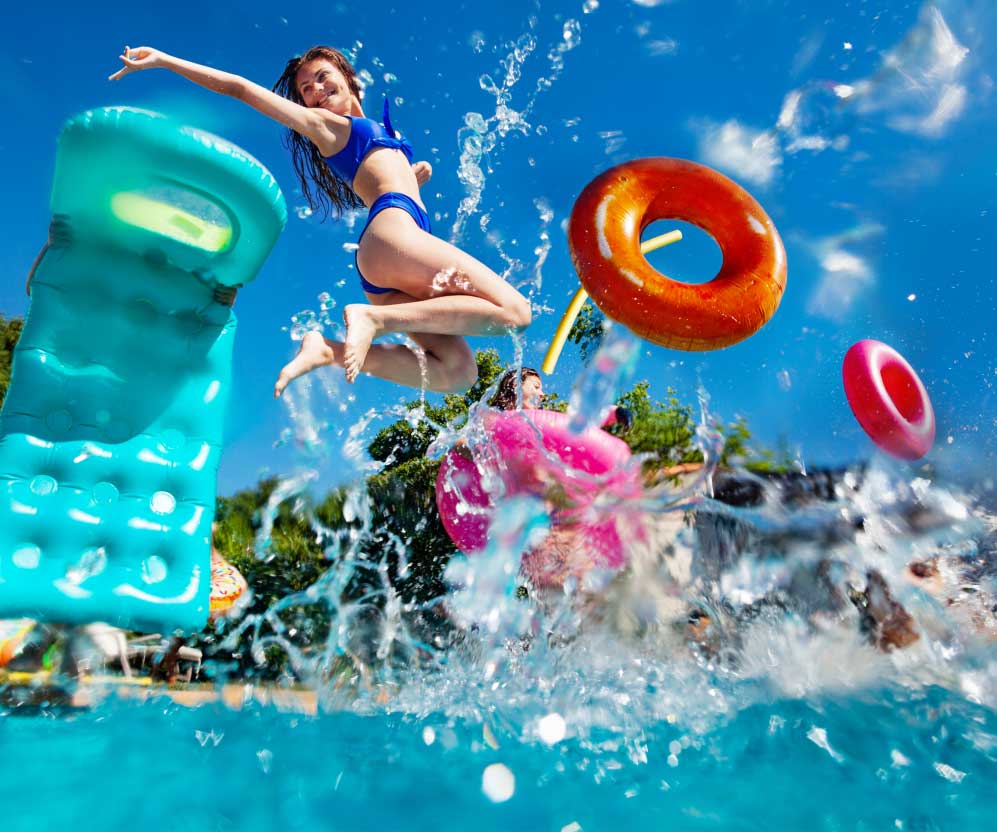
TOP TIP
For effective filtration, remember …
Filling your pool can take a long time, so make sure that start far enough in advance. If you use boreholewater to fill your pool, there is a chance that metals may be present in the water. Use HTH® Metal
Remover to prevent possible staining.
Test your pool Water

3-In-1 Test Kit
Testing your pool water.
Use the HTH® 3-in-1 test kit to measure:
- pH
- Free Available Chlorine (FAC)
- Total Alkalinity (TA)

Early Warning Pool Test Strips
Dip and Match, it only takes 2 seconds – as quickly
as dipping your toes into the pool water.
- Free Chlorine
- Total Alkalinity (TA)
- pH
- Stabiliser (Cyanuric Acid/CYA)
TOP TIP
Testing your water and correcting your levels is essential …
To ensure that your pool chemicals work effectively; to ensure bather comfort; and to protect your pool lining and fittings from damage.






